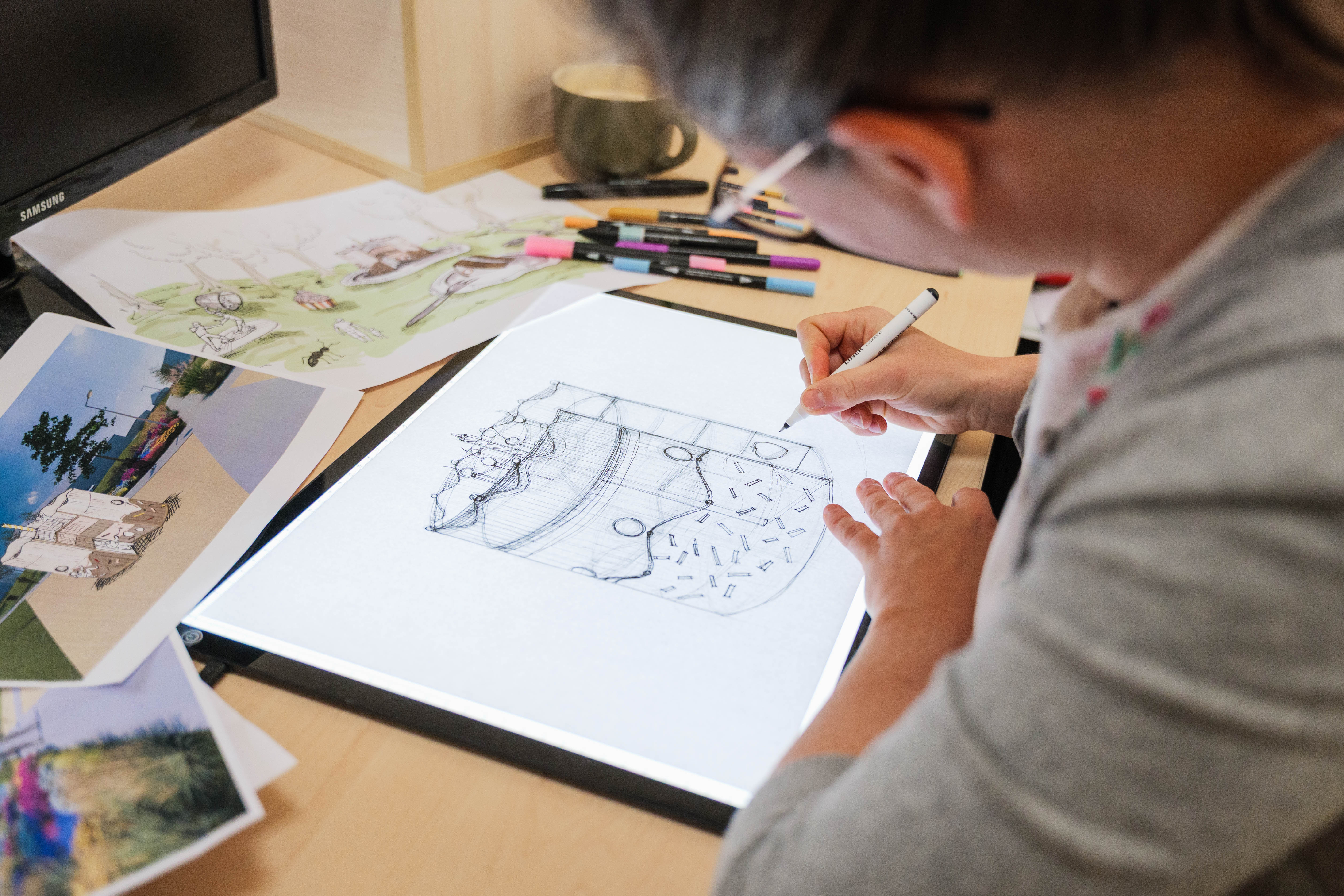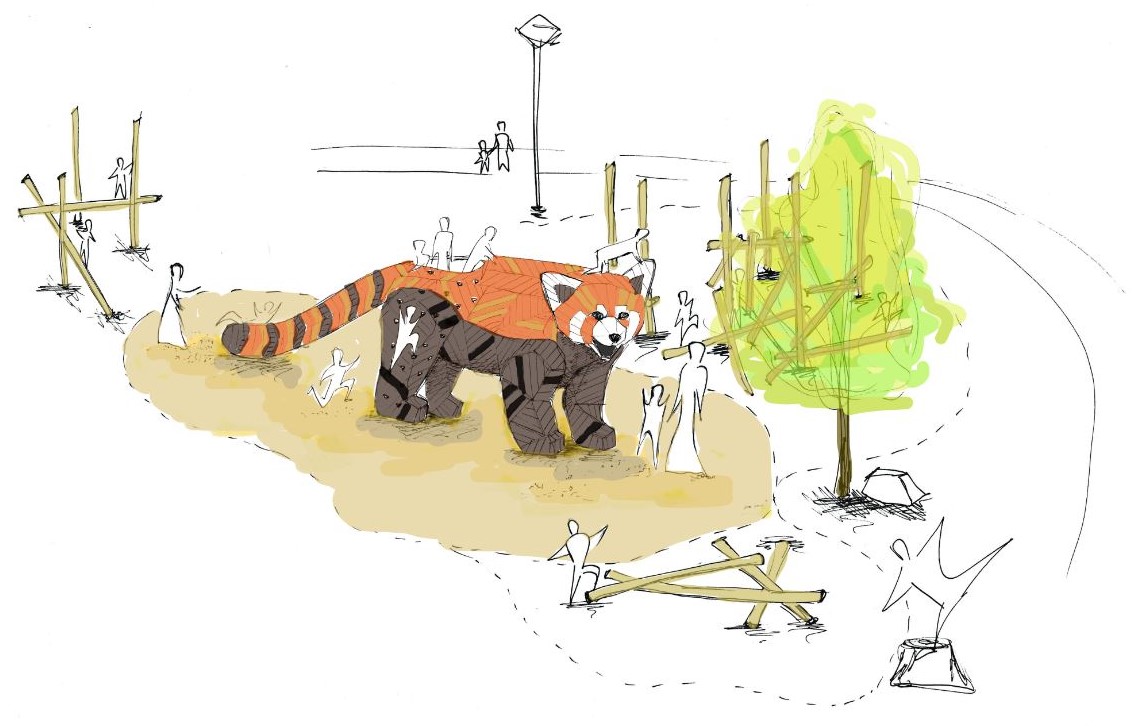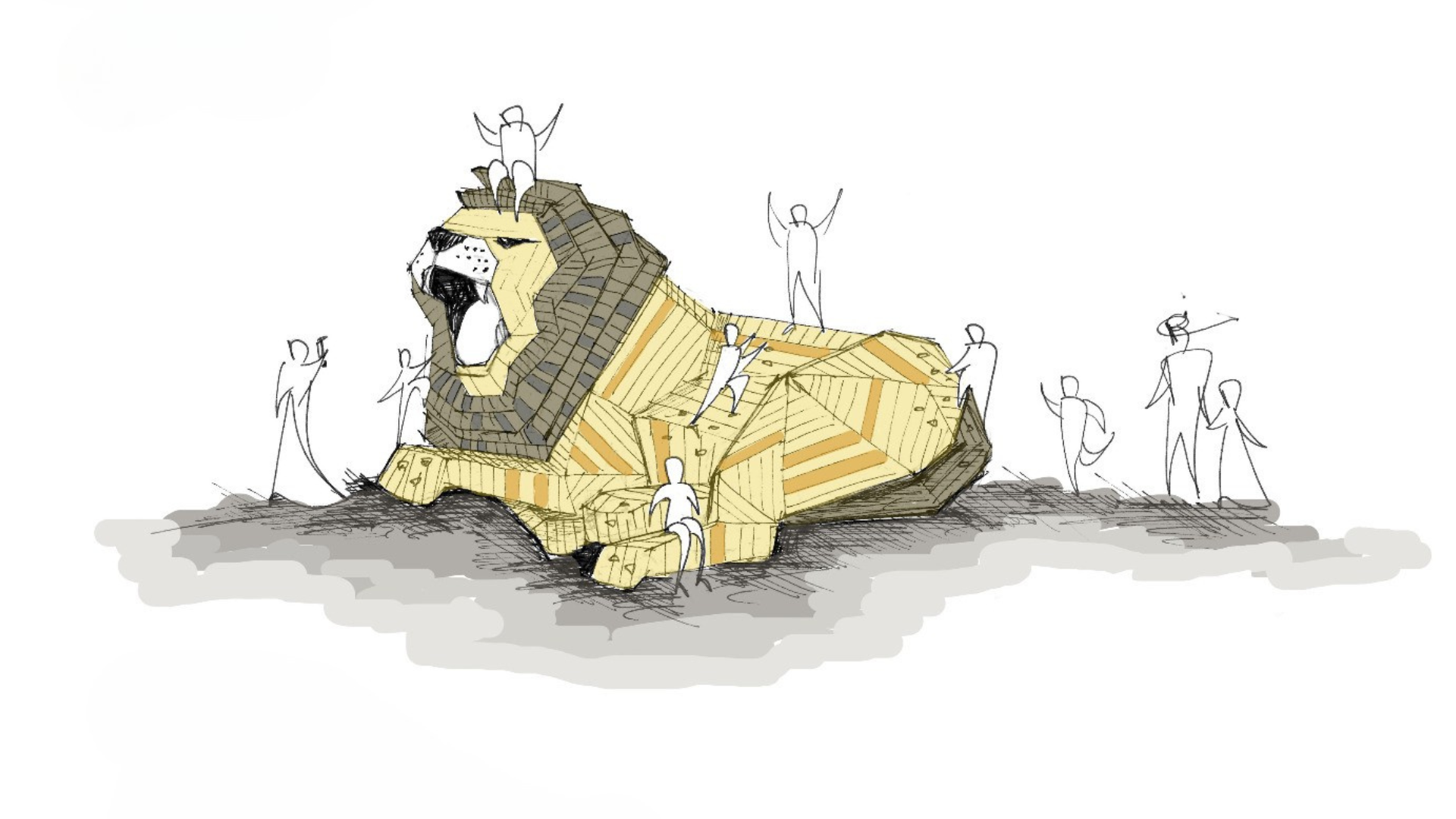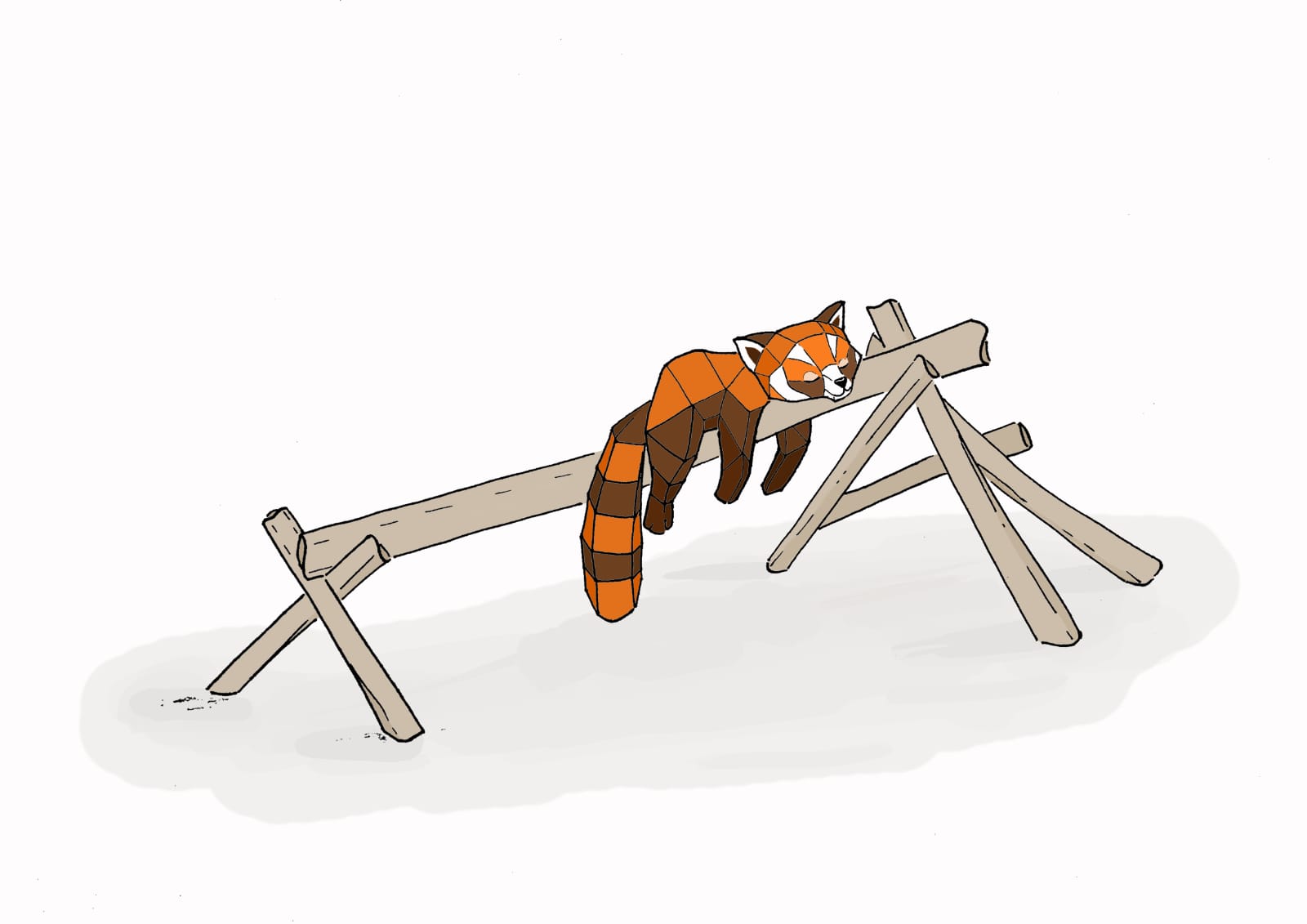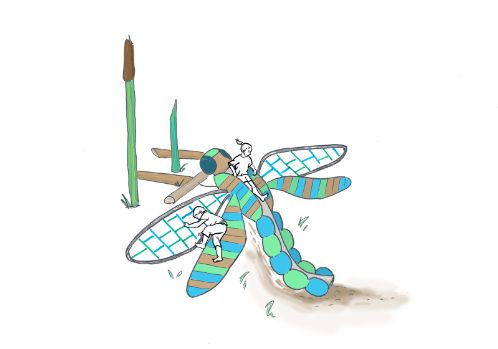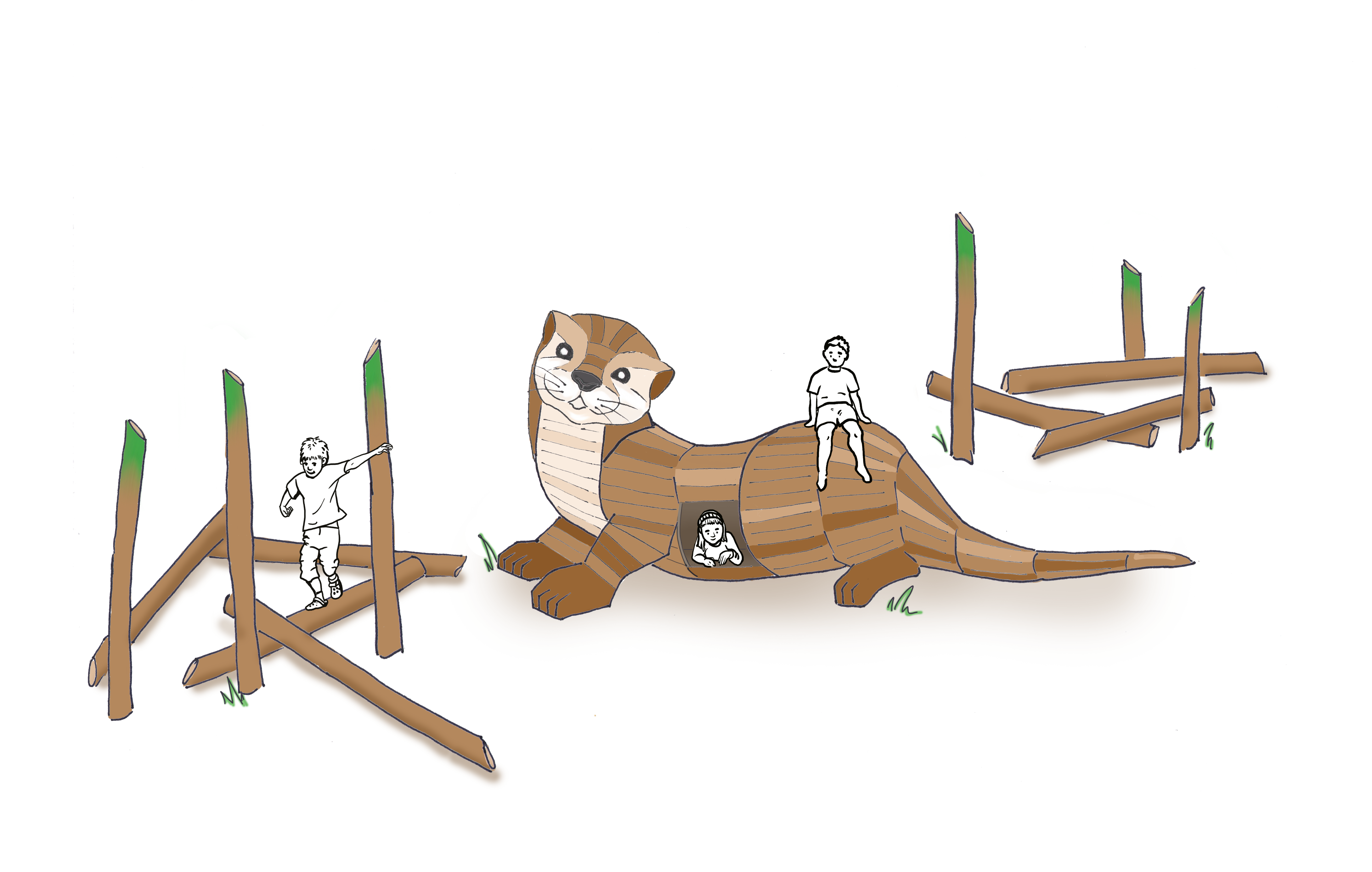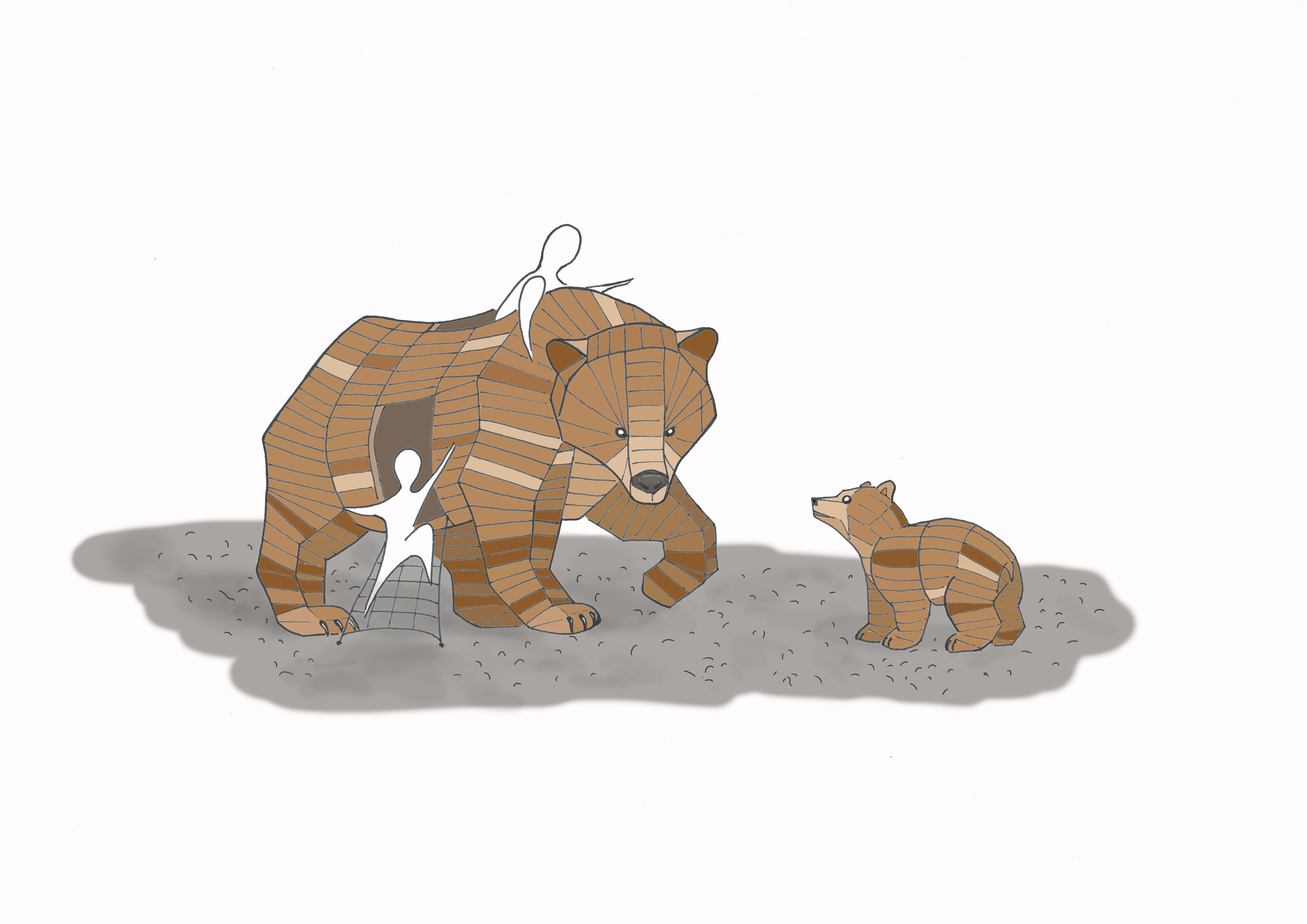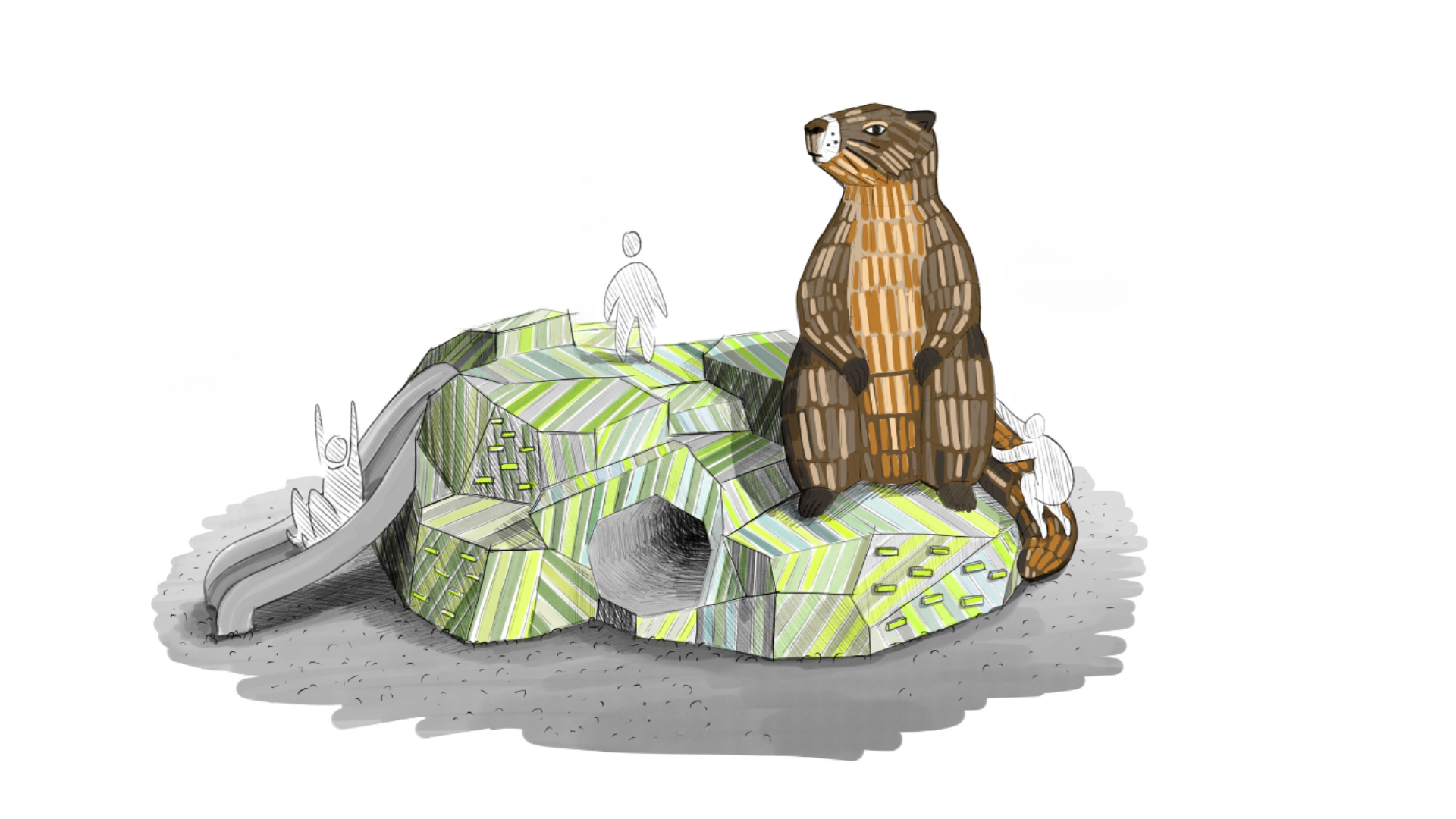Sculptures are often placed in public spaces as decorative art pieces. Our play sculptures serve that purpose too – but they’re primarily designed for active play. Children can climb on them, crawl inside, slide down, and explore hidden corners and tunnels – discovering play possibilities along the way.
What do they look like?
Many of our sculptures are larger-than-life animals – red panda, marmot, bear, golden oriole, or lion. But we don’t stop there. A play sculpture can take any form: a flying UFO, a giant inflatable duck, a birthday cake. It can represent a local symbol, the mascot of a zoo, or an object tied to regional history or production. We’ve designed a sheep for a region with a tradition of sheep cheese-making, a tank for a WWII memorial, and a stork with a nest for a maternity hospital. All you need is a creative idea – and our team of architects will make it play-worthy. Even at the design stage, we follow safety standards and production guidelines for playground equipment.
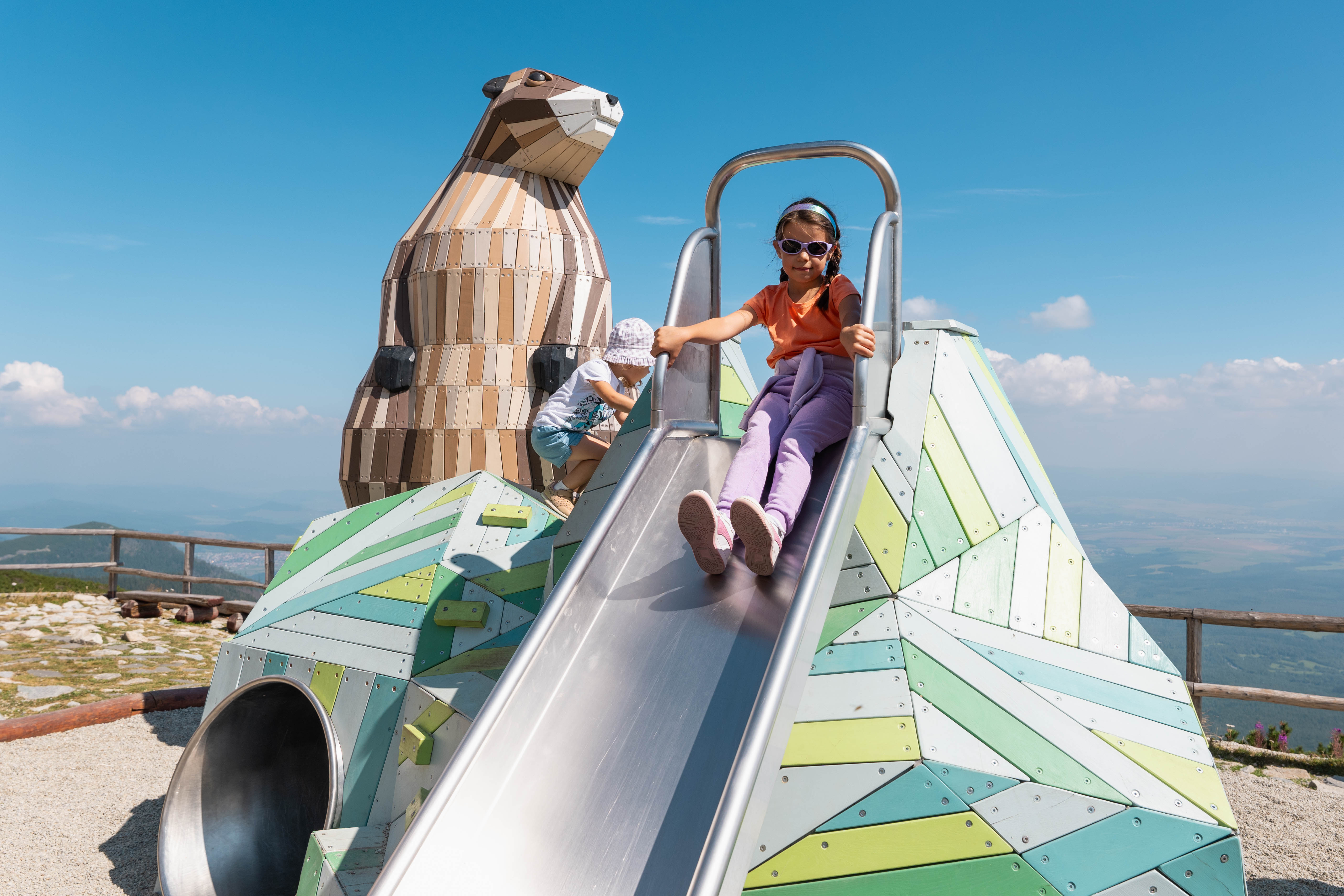
How are they built?
Each sculpture has a steel frame, but the main material is wood – both inside and out. We typically use durable robinia or larch. A single sculpture can contain over a thousand unique wooden parts. Fine details like paws, eyes, ears, heads, or beaks are crafted by skilled artists. Most sculptures are anchored in concrete footings. The final colour finish is adapted to local climate conditions. We can add climbing holds, rope or net elements, a slide – even interactive features like sound effects triggered by a button. For the marmot sculpture in Skalnaté Pleso, we even had a custom Y-shaped stainless-steel tunnel made, hidden inside the wooden rock where the marmot stands. Play sculptures are often part of a larger playground, but they can also stand on their own. When integrated into a playground, we’re happy to design additional play features that match the sculpture’s theme.
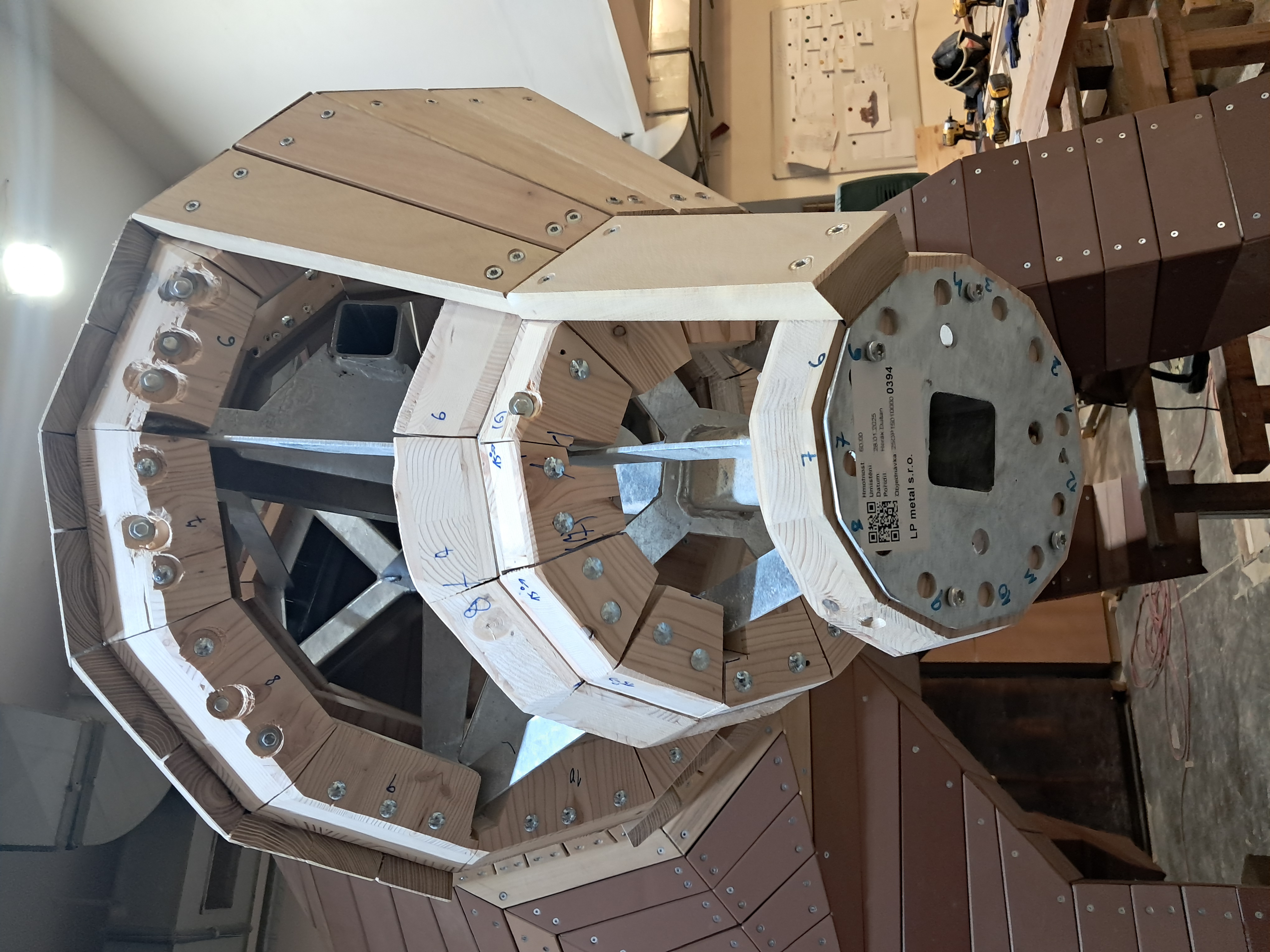
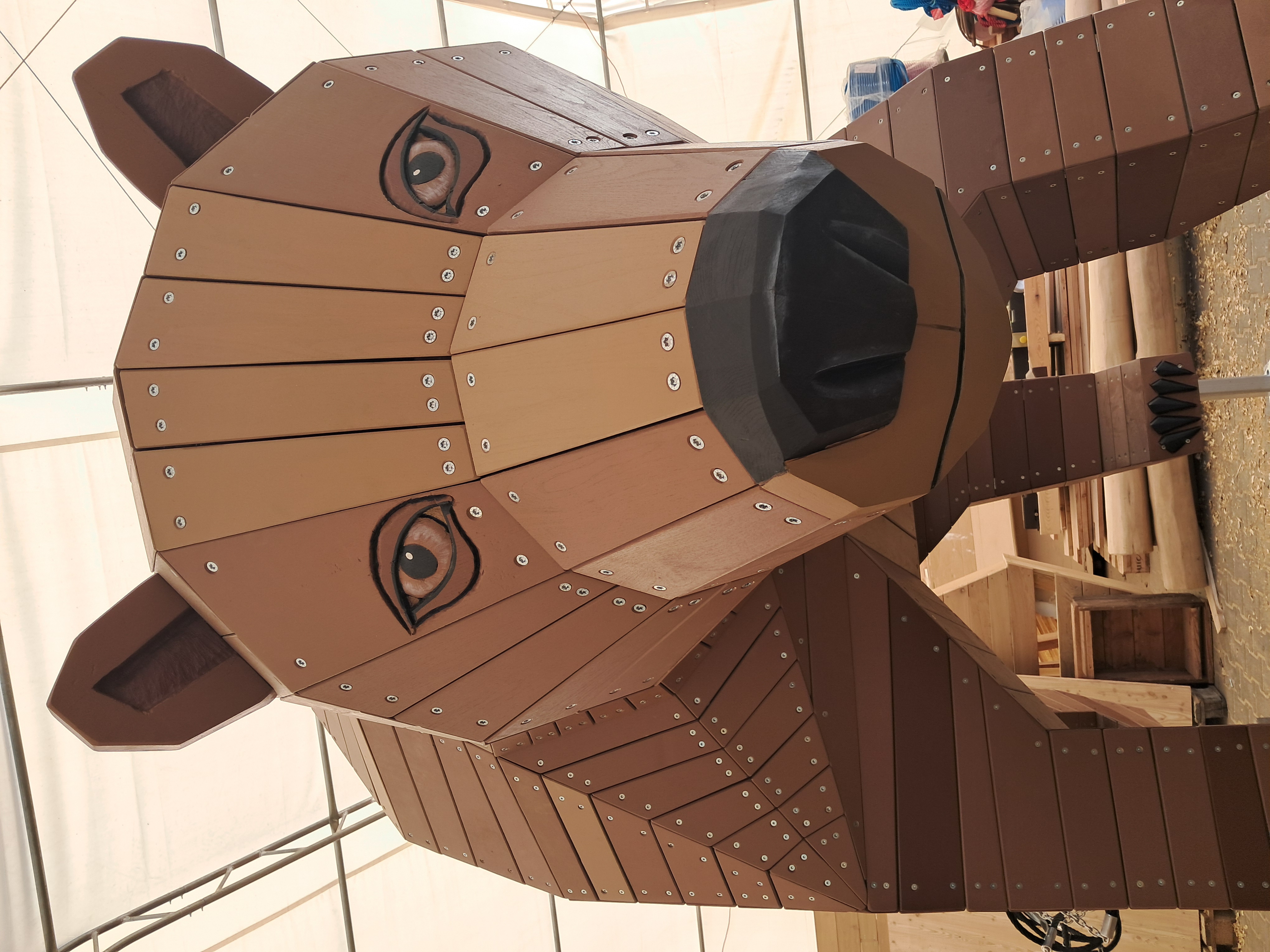
Design matters
Playgrounds aren’t just places for safe play – they shape children’s aesthetic sense and can create a welcoming environment for adults too. That’s why design and visual quality matter. Why not offer something unique – something no one else has? Something that sparks curiosity and turns heads? The more original, the better. A play sculpture can help promote the location, become a local landmark, and even attract visitors as an unintentional photo point.
Why choose a play sculpture
- A bold visual element thatpromotes your location
- An innovative and original formof play
- Tailored design reflecting localthemes or client wishes
- Long-lasting materials: robiniawood and steel
What would your ideal play sculpture be? Have an idea?Let us know.


